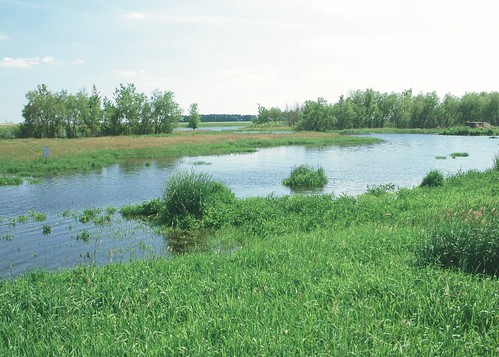
USDA’s Natural Resources Conservation Service (NRCS) helps private landowners return fields and pastures that were drained for agricultural use back to their natural state – wetlands. This is because of the value that wetlands provide: they filter and store water, they prevent floods and they provide vital homes to wildlife.
Mark Putman in Christian County, Ky. is seeing the benefits on land he enrolled into a conservation easement with NRCS. Thanks to the wetland restoration project, he and his 10-year-old cousin, A.J., have a great story to tell.
Putman owns and operates a guided and non-guided hunting operation, so restoring the land to attract more wildlife was important. He and his family also enjoy hunting deer, ducks and turkey.
NRCS worked with Putman to establish a shallow water area on his land in 2013. Unlike a pond, the depth of a shallow water area is measured in inches rather than feet. The shallow water provides habitat for shoreline birds, waterfowl, wading birds, mammals, fish, reptiles, amphibians and other species that require shallow water for at least a part of their life cycle.
A shallow water area can be created with a dozer by clearing trees and brush in an area that will naturally fill with water. It holds water seasonally.
To help with this conservation practice and others, Putman enrolled his land into the former Wetlands Reserve Program (WRP). The 2014 Farm Bill merged it with other easement programs, forming the new Agricultural Conservation Easement Program.
The wetland restoration was a success, leading to more wildlife on their land. Just before deer season though, Putman’s trail camera picked up pictures of a large buck. When youth season began, he and his young cousin headed out looking for the buck, but unfortunately, they never saw CC, their nickname for it.
When the primitive weapons season opened a few weeks later, the two hunted again in a deer stand near the shallow water area. That evening, they saw CC, but he was too far to reach. The camera continued to capture photos of CC.
Opening weekend of regular season started, and they still hadn’t seen CC while hunting. “We saw a small buck early in the weekend but not CC,” Putman said. “But on Sunday morning when we settled into our stand, A.J. asked if he could blow his grunt call.”
Within five minutes, just before sunrise, CC walked out onto the levee in the same place he stood during the muzzle loader season. A.J. quickly had his rifle up and was looking through the scope, waiting for Putman to give the go.
Putman recalls the scene: “I said, ‘do you have him?’” A.J. responded ‘Yes! Yes.’ So I told him to fire away.” A.J. didn’t waste time; he fired and bagged the deer.
The young trophy hunter recognizes the importance of wetland restoration when it comes to improving the land, Putman said. He said he enjoys instilling the values of conservation in his cousin and other youngsters.



